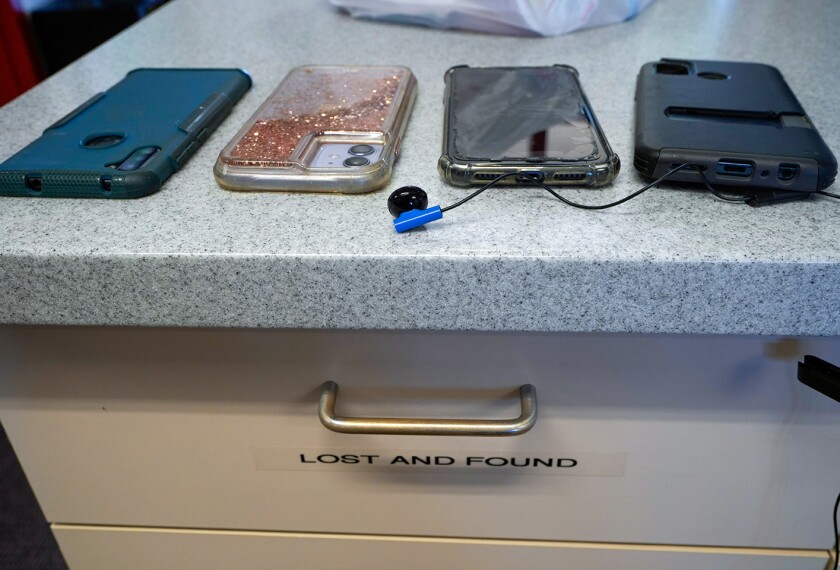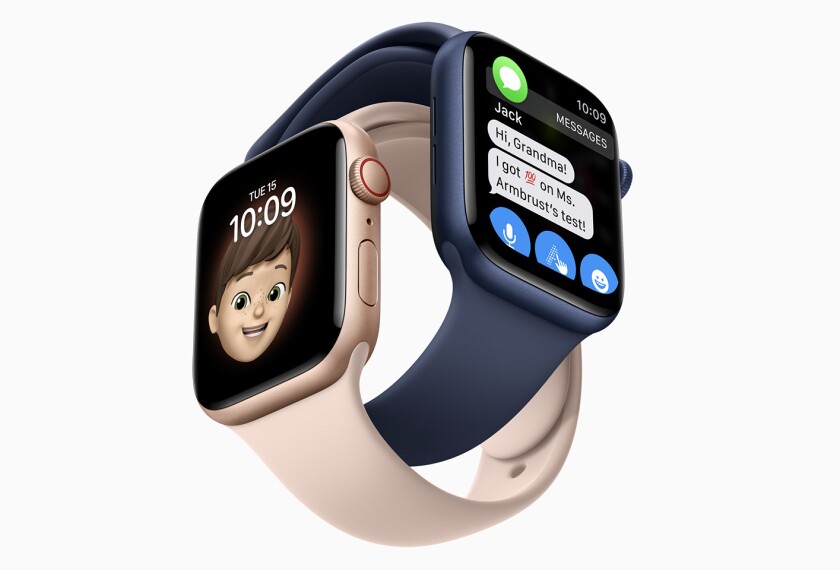A flurry of school districts across the country are tightening cellphone restrictions, because they believe students’ misuse of the devices has negatively affected their behavior and ability to learn.
In 2015, 66 percent of schools in the United States prohibited non-academic use of cellphones during school hours, according to the National Center for Education Statistics. By 2020, that percentage had jumped to 77 percent.
Many educators blame students’ cellphone use for being the top distraction in schools and classrooms. The constant use of the devices has also been linked to students’ worsening mental health.
The issue has caught the attention of federal and state policymakers, too. Some states—such as California, Florida, Indiana, and Tennessee—have passed laws allowing schools to restrict cellphone use. A handful of other states are considering passing similar laws. Congressional lawmakers have also introduced legislation that would require a federal study on the effects of cellphone use on students’ mental health and academic performance.
Liz Kolb, a clinical professor of education technologies and teacher education at the University of Michigan, said it’s unlikely that all 50 states will pass laws restricting students’ cellphone use, “but we’re seeing a lot more [movement] at the individual school level, where they’re trying to figure out policies that make sense [for their communities].”
At the district level, these restrictions vary widely. Some districts restrict student cellphone use anywhere and any time during the school day. Some allow use of the devices during lunch and in the hallways. And others haven’t placed any restrictions at all, often because of parent and student pushback.
Even in districts where there’s a ban, “there’s a lot of nuance” in how schools are addressing it, Kolb said. “In order for a full school ban to be effective, you really have to have strong leadership supporting the staff in enforcing it.”
Some of those nuances include exceptions for students who have a documented need to have their digital devices for health reasons, such as checking blood glucose levels if a student has diabetes. Teachers also have the flexibility to allow students to use their cellphones in class if they are needed for instructional purposes.
Here are six different policy approaches districts are putting in place to address concerns about student cellphone use:
1. Cellphones are restricted for all students, regardless of grade level
In Florida’s Orange County district, all students are prohibited from using their cellphones and other wireless communication devices, such as smartwatches, during school hours—meaning from the first bell to the dismissal bell, these devices must be silenced and put away in their bags. If a student is caught using a phone during the school day, the device will be confiscated and returned to the student at the end of the day. Depending on the circumstances of the violation, a student could also get detention or be suspended.
Flint schools in Michigan also prohibit all students, regardless of grade level, from using cellphones or other personal electronic devices. If a student is caught using a phone, it will be confiscated and returned to the student’s parent or caretaker.
Some districts provide technological solutions, such as pouches, to lock and store students’ phones during the school day. In other districts, educators have found creative ways to separate students from their phones, such as using over-the-door shoe holders where students place their phones during class.
2. Cellphones restricted only for elementary students, more flexible for middle and high school students
While restrictions on the use of cellphones and other two-way communication devices exist for all students in the Wauwatosa district in Wisconsin, there are more flexible rules for middle and high school students. Cellphones are prohibited all day for elementary students, but middle and high school students can use their phones before and after school, between class periods, during lunch, and in free periods. Teachers and principals have discretion for imposing consequences for misuse.
3. Cellphones are prohibited for elementary and middle school students, but more flexible for high school students
Elementary and middle school students in Virginia’s Rockingham district are prohibited from using personal electronic devices during the school day, while high school students may use their devices during lunch, study hall, advisory periods if permitted by a teacher and principal, and in between classes.
4. Cellphones are restricted only in classrooms, locker rooms, and bathrooms
Other districts, such as Richmond schools in Wisconsin, have restrictions on cellphone use only in certain areas of schools, such as classrooms, locker rooms, and bathrooms—to prevent bullying or sharing of inappropriate images, according to some district policies.
5. Cellphones restricted only in classrooms
Some restrictions are centered around classroom time only and allow students to use their phones outside of the classroom. In the Brush school district in Colorado, for instance, students aren’t allowed to have their phones out during instructional hours but can use them any other time. If a student is caught with a phone when they’re not allowed to have it, parents can either come to school to collect the phone or they can let the school keep the phone until the end of the day.
6. Cellphone restrictions are left up to each school
There are also districts, such as Meriden in Connecticut and Minnetonka in Minnesota, that don’t have districtwide restrictions, but instead have guidelines that schools can choose to follow.
For instance, in Meriden, the guidelines recommend elementary students keep their phones in their bags the whole school day; middle school students keep their phones in their lockers but can use them during lunch; and to let high school students have access to their phones all day but they must be turned off and out of sight during class time.
Other districts, such as Pawtucket in Rhode Island, allow principals or teachers to implement their own school or classroom rules around cellphones, as long as there’s a clear plan for allowing students to use them in case of emergencies.







